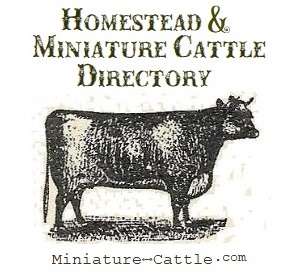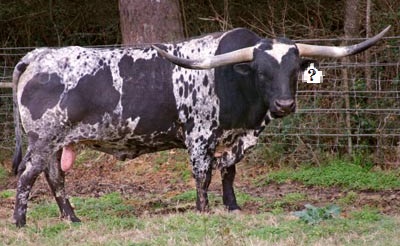
EXCELLENT GUIDE FOR BEGINNER INTRO TO ANIMAL ID FOR CATTLE
by Jack C. Whittier • First published on 28 February 2011
Being able to identify cattle is a key part of raising them. In particular, individual animal identification facilitates keeping records used to make management and mating decisions for improvement.
In addition, certain identification methods (particularly branding) are used to determine legal ownership.
In recent years there has also been increased emphasis on beef quality assurance, source verification and disease surveillance. All of these depend upon animal identification.
When considering cattle identification, one must first determine if identification needs to be for the individual animal or as a group.
In general, group identification is done for ownership and group management, while individual animal identification is needed for recording individual animal performance.
The focus of this article will be toward individual animal identification.
Traditional identification systems have been visual-based. With developments in computer-driven technologies, electronic identification options are now available.
In most cases, electronic systems also include a visual number to assist the user and as a backup if failure should occur.
Useful visual individual animal identification systems include the following characteristics:• Permanent or long-lasting and resistant to tampering
• Easy to read at a short distance
• Contain needed information about the animal
• Be part of a system to enable tracking of cattle and information
Flexible plastic tags are probably the most widely used for cattle identification. Placing the tag in the animal by piercing a hole in the ear with a secure backing is most common.
Numerous brands and types of tags are on the market. Ear tags have limitations in brushy areas; however, more flexible tags have seemed to aid in retention.
Retention and legibility are the most important considerations for all tags. A producer may purchase preprinted tags or choose to write his or her own numbers on the tags.

Some tags have special markers for writing on them, others are designed to have numbers inscribed in them. It is important to make sure tags are large enough to be read at a distance and that numbers remain readable.
When applying ear tags, avoid the cartilaginous ribs of the ear and choose a flexible portion of the ear instead.
Ear tags can be purchased in different colors and types. When applying ear tags, it is important to avoid the cartilaginous ribs of the ear as well as to choose a flexible portion of the ear.
Some producers find it helpful to tag steers and heifers in opposite ears or with different-colored tags, which aids in sorting.
Metal clip-type tags provide a durable, easily applied option. They are usually well retained but may infrequently be lost.
Animal health officers use special metal tags as a tool for tracking animals for monitoring brucellosis.
Brucellosis tags or other metal tags may be used in combination with plastic ear tags to provide reasonably permanent identification along with an easily read tag.
Each of the brucellosis metal tags has an individual number and is readable once an animal is restrained in a head-catch.
Although these tags are durable, they are not always permanent. When applying self-locking metal tags, you should consider the following:
Similar to the tattooing procedure for humans, ink is put into the animal's skin in a series of dots that outline numbers or symbols.
In cattle, this tattoo ink is put under the skin inside the ear using special tattoo pliers that puncture the skin and leave a permanent number.
Tattoos are a good permanent means of identification. However, because tattoos are inside the animal's ear, the animal must be restrained to read the tattoo.
In black-hided cattle, the inner area of the ear is generally lighter, which allows the tattoo to be visible. However, contrast between the color of the tattoo ink and the color of the inside of the ear is also helpful.
The combination of permanent tattoos with large and easily read ear tags may be a practical option for some producers.
Most breed associations require that cattle have ear tattoos for registration. Tattoos are also a required part of identification of animals for brucellosis vaccination and monitoring programs.
The tattooing process is somewhat time-consuming, and an adequate head catch is essential. For good tattoos, the following steps should be followed:
Electronic identification (EID) tags are becoming an ever-more common tool for individual animal identification.
However, EID tags are only part of a system required to achieve the maximum benefit from this technology. Other items will almost always include a reader, a computer and the required computer software.
It is important to understand that there are numerous options in electronic identification systems. As time progresses, there will likely be additional advances.
When considering an EID system, the following points should be considered:
Regardless of the identification method used, a tracking or record system facilitates the use of the information. The use of EID can greatly enhance the use of computerized record-keeping systems for herd management.
Numbering systems for individual identity of cattle can be a challenge and must be carefully thought out.
A number should not be duplicated for 10 years or more and should not be more than four digits so it can be read easily.
If computerized record-keeping systems are used, it is essential producers eliminate any duplicate numbers. The best numbering system is one that is simple and easy to read.
A common system involves including the last digit of the year (e.g., 1 in the year of 2011) as the first digit of the animal identification.
For herds less than 1,000 cows this system accommodates a simple consecutive numbering system. As calves are born each year, they are identified with a four-digit number that would begin with the last digit of the year they were born. For example, the first calf in the 2011 crop could be tagged 1001.
Most producers find it advisable to include all the digits in a numbering system on each tag, tattoo or number brand.
For example, in a four-digit system for calves born in 2010, calf number 3 should be identified as 0003. This decreases the chance of her being misidentified as calf number 30 or some other number.
A four-digit system for herds less than 500 cows also allow the flexibility of not repeating numbers for 20 years. This is done by beginning the calf consecutive numbering system in the second decade with the number 501.
For example, the first calf born in the year 2021 would be identified as calf 1501 rather than 1001.
This would allow this animal and its record to be easily distinguished from the first calf born in the year 2011, which would be identified as calf 1001.
Some breeds and record systems use a letter code to represent a given year. In this system, instead of including a 1 to represent the birth year of 2011, producers would include the appropriate letter code “Y” in the numbering system. See Table below.

ear year table
Calves are sometimes given the same number as their mother. This makes management with the calves easier and can simplify record keeping for calving data.
If these calves remain in the herd they will receive their own individual number according to the prescribed system.
Simple, easily readable forms of animal identification are important to assist cattle producers in maintaining records for genetic and management decisions.
Visual and electronic identification systems exist for this use. Likewise, simple numbering systems should be used to minimize confusion and errors in recording and tracking animal information.
Author's note: Portions of this article were written based on factsheet CL710 titled “Cattle Identification” by Bruce Nisley, Ron Torell and Willie Riggs. This factsheet is part of the Western Beef Resource Committee Cattle Producer's Library, available in hard-copy from the University of Idaho and on-line from Colorado State University at www.csubeef.com.
Jack C. Whittier
progressivecattle.com/topics/management/basic-principles-of-identifying-cattle
Beef Extension Specialist
Colorado State University
![]()
Homestead & Miniature Cattle Directory
![]()
Homestead Cattle Association
![]()
Homestead & Miniature Cattle Registry
Heritage Cattle Registry
![]()
©published online 2021